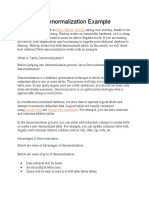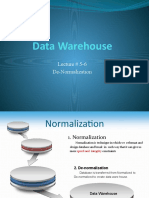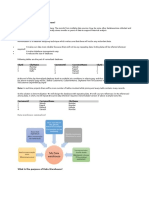NAME: ABU-BAKR SIDDIQUE
REGISTRATION NO: SP22-BCS-086
CLASS/SECTION: BCS/B
COURSE TITLE: DATABASE SYSTEMS
PROFESSOR’S NAME: PROFESSOR ABDUL
QAYYUM
SUBMISSION DATE: SUNDAY, DECEMBER 24,
2023
Question: What are the methods of denormalization? Discuss the examples of each method.
Answer: Denormalization is a database optimization technique that involves intentionally introducing
redundancy into a database. Here are common methods of denormalization along with examples:
1. Duplication of Data:
Method: Store redundant copies of data in multiple tables to eliminate the need for joins.
Example: In a retail database, you might duplicate customer information in both the orders and
customers table to avoid joins when querying order details.
2. Aggregation:
Method: Pre-calculate and store aggregated values to avoid the need for recalculating them during
queries.
Example: Instead of calculating the total sales amount every time, a data warehouse may store pre-
aggregated totals for faster reporting.
3. Flattening Hierarchical Structures:
Method: Convert normalized hierarchical structures into flattened structures, reducing the need for
complex joins.
Example: In an organizational chart, denormalization might involve storing employee information along
with their department details in a flat table, avoiding recursive queries.
4. Materialized Views:
Method: Create and maintain precomputed views that store the result of a query, updating them
periodically.
Example: Storing a summarized view of monthly sales by region as a materialized view rather than
recalculating it each time.
5. Caching:
Method: Cache frequently used query results to reduce the load on the database.
Example: Storing the result of a complex and frequently executed query in a cache for a certain period
to serve subsequent requests more quickly.
6. Partitioning:
Method: Divide a large table into smaller, more manageable partitions based on specific criteria.
Example: Partitioning a sales table by date, so queries for a specific time range can be faster by
accessing only relevant partitions.
Denormalization involves trade-offs, such as increased storage requirements and the potential for data
inconsistencies. Careful consideration of the specific use case and performance requirements is crucial
when deciding to denormalize a database.






























































